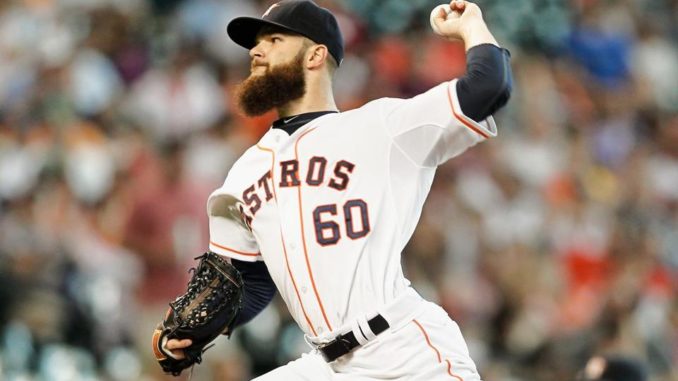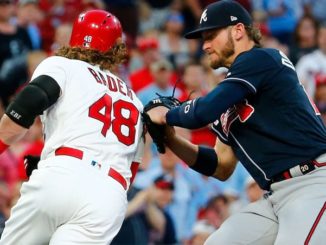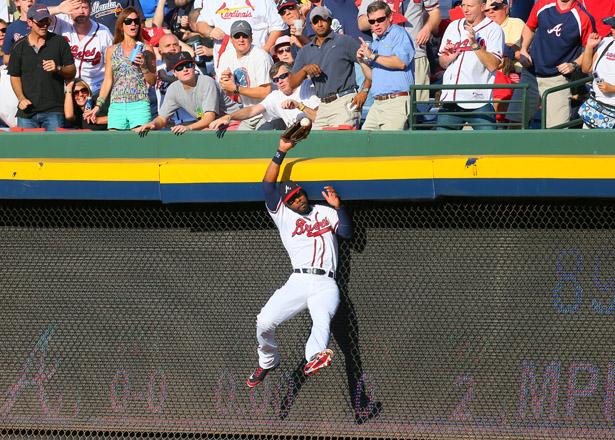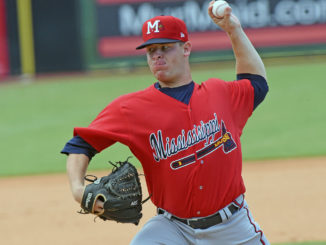Agreed to terms with LHP Dallas Keuchel on a one-year contract.

Back in February, in the deep cold of the this offseason’s free agency period, I wrote about the pros and cons of a team signing 31-year-old left-hander Dallas Keuchel. I’ll #SaveYouAClick and quote the relevant passage:
Keuchel is an extreme groundball pitcher. His 53.7% groundball rate paced all of baseball in 2018 among qualified starters, and that is no fluke. Keuchel’s career groundball rate is even higher, 58.8%. Keuchel at his best has all five of his pitches — four-seam fastball, sinker, cutter, slider, and change-up — dipping and diving and jinking out of the zone and inducing weak contact. In 2015, he did that so well he was the runaway Cy Young Award winner, garnering 22 out of 30 first place votes. Fast forward to 2018 however, and more of those pitches are finding bigger pieces of the plate. Batters hit line-drives off Keuchel at a 22% rate last year, the first time hitters have gotten over 20% on Keuchel in five seasons.
The question for teams pursuing Keuchel is if that could just be a one-time blip, or if that’s a sign of decline. If the latter, how gradual will that decline be, and how much do teams want to pay for it?
The answer to that last question turned out to be exactly zero dollars, and Keuchel remained on the free agent market well into the regular season, unable to get a team to offer him a multi-year deal. Before too long, even teams that had found themselves with unexpected pitching issues — and there are many teams in that boat — decided that signing Keuchel, or fellow free agent exile Craig Kimbrel, wasn’t worth disrupting their draft plans by forfeiting a draft pick for signing either player.
Well the draft has concluded. emancipating both Keuchel and Kimbrel from the chains of the qualifying offer attached to them by their former teams, and both came to terms with new teams within 24 hours of the conclusion of the draft. The Cubs secured Kimbrel by offering two extra seasons on top of the current one, an area where other interested suitors including the Atlanta Braves were not willing to go. Keuchel however was open to a contract that would only carry through the remainder of this season and Atlanta outbid the likes of the New York Yankees and Minnesota Twins to bring him home.
The Breakdown
For the sum of approximately $13 million, the Braves acquired in Keuchel a predominately sinkler/slider starter who is perpetually among the league leaders in groundballs. This should work well in Atlanta, a team that has ranked in the top 10 among major league teams in Defensive Runs Saved from infielders since the start of the 2018 season, and 5th in overall DRS.
What scared off teams from long-term investment in Keuchel has been his declining ability to get strikeouts when needed, combined with a higher instances of hard contact off of him. Fortunately, the Braves will not need to worry about his long-term outlook. Even with the long layoff, it should be reasonable to expect Keuchel to approximate his output from 2018, which was still a solid 3.74 ERA, 3.69 FIP, 3.3 fWAR season. Given that the Braves’ starter ERA is 4.31 and currently only Mike Soroka and Julio Teheran have ERAs under Keuchel’s 3.74 from last year.
Beyond the performance itself, Keuchel has also been durable, averaging 213 innings over the last three seasons and over 6 innings a start in 2018. This is a quality desperately needed in Atlanta as Braves starters are only averaging a little over 5 innings a start and forcing the thin bullpen to cover too many innings.
Keuchel will likely make two starts for AAA Gwinnett to ramp up for major league action, the first outing to be a good test against the Durham Bulls, one of the top teams in AAA.
This signing also kills two birds with one stone by pushing a current starter to the bullpen. The Braves will have 10 days to figure out who that will be, but the early clubhouse leader is Kevin Gausman, the owner of a 6.96 ERA in his last 11 starts and who has surrendered 15 earned runs in his last 6 innings. It’s possible that refining his 2-seam fastball and splitter in the bullpen may allow his to still provide value, similar to how fellow disappointing starter Sean Newcomb has been able to provide value in relief. For his career, Gausman owns a 3.86 ERA in 23 regular season relief appearances and a 2.70 ERA in 4 postseason relief appearances, including a two-inning stint for Atlanta in last year’s NLDS.
The Big Picture
The Keuchel signing also represents the Braves striking first in what should be a spirited attempt by most contenders to acquire talent before the now hard deadline of July 31 at 4:00 PM (MLB adopted a rule change that did away with the additional and confusing waiver-wire trade period in August). Instead of fighting with other teams for a small pool of available difference-makers late in July, Keuchel represents a talent roughly equivalent of what is likely to be available, but will be on the team and contributing by mid-June.
Even better from the Braves’ point of view is that Keuchel comes without having to pay another team in precious prospects or in long-term salary commitments to the player himself. Like it or not, the Braves have been determined not to sacrifice any significant future value for present value, either in terms of prospects or the payroll budget.
That said, the signing does indicate that the front office has been speaking truthfully to fans, many disgruntled by the lack of off-season talent acquisitions and suspecting that team owners Liberty Media was sabotaging the team payroll to improve their ledgers, when they repeatedly indicated that there was significant payroll to improve the team. It’s just clear that the front office will not make a move unless it’s absolutely under what they view is advantageous terms. High-dollar acquisitions for very short-term improvements are in, getting bogged down in long-term deals to declining players is way, way out.
It should also be noted that the Braves were rumored to be willing to sign both Kimbrel and Keuchel, and that only the addition of a third year to the deal dropped Atlanta out of the running for Kimbrel. The back-of-the-napkin math puts the current Braves payroll at around what the year-end payroll was in 2018. Braves officials have indicated that the team does have a higher overall payroll this year, so if you take them at their word (an impossible task for some readers I know, but bear with me) it should mean the Braves have the capability for taking on more payroll at the trading deadline, especially if the Braves can simultaneously move non-contributing salary off the books. In other words, fans shouldn’t believe that the Braves are done improving the roster.




Leave a Reply